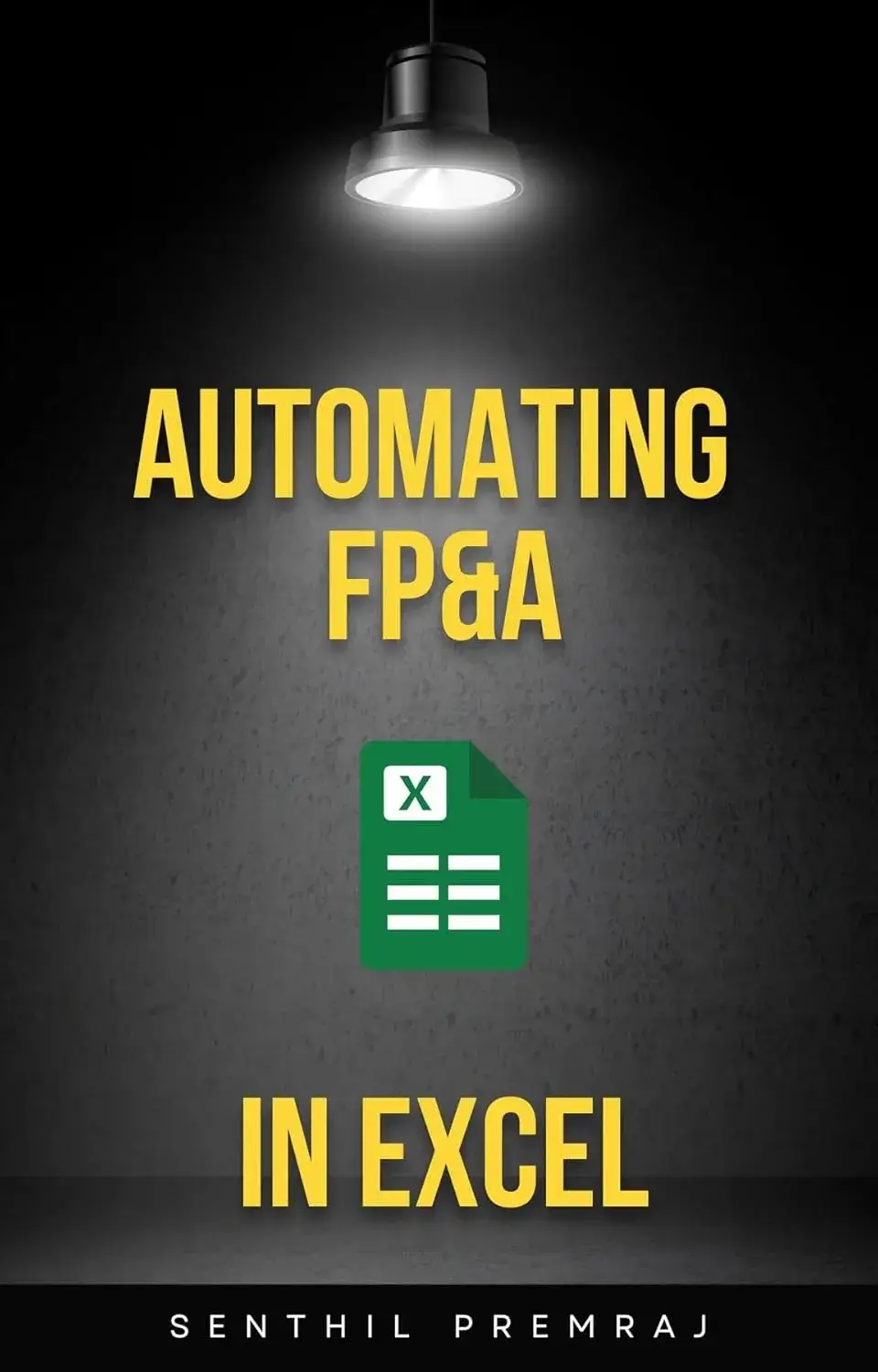When you’re first diving into the world of corporate finance and planning, you’ll quickly come across two common terms: AOP (Annual Operating Plan) and Budget. To clarify the AOP meaning, it refers to a comprehensive annual plan that aligns an organization’s objectives, resources, and initiatives to achieve its strategic goals. While they are often used interchangeably, they serve different but complementary roles in guiding a company’s financial decisions and strategy. In this article, we’ll explore both concepts from a strategic finance perspective, highlighting their key differences, purposes, and how they work together to help organizations achieve their goals.
Annual Operating Plan (AOP) Template
Create a clear, actionable AOP with this detailed template. Includes sections for financial targets, departmental plans, and reporting
Business Budget Template
This template explains the business budgeting process by showing how to collect data from different departments and roll it up into a P&L budget. You can click through the various cells to explore formulas and understand the process in detail.
1. What is Annual Operating Plan (AOP)?
An Annual Operating Plan (AOP) is a comprehensive plan that outlines an organization’s goals, objectives, and priorities for the coming year. It details the initiatives, resources, and activities required to meet strategic targets and generate the desired business outcomes over that 12-month period. The AOP is a high-level strategic roadmap that connects the company’s broader mission and vision to tangible actions and metrics.
Key Characteristics of an AOP
- Strategic Alignment: It ensures that yearly objectives align with the company’s long-term vision and strategic plan.
- Focus on Key Initiatives: It usually includes major projects, product launches, market expansion strategies, or operational improvements.
- Resource Allocation: It outlines how the company will allocate resources (people, time, and funds) to support key initiatives.
- High-Level Targets: It typically sets annual targets for revenue, market share, or other relevant KPIs that are important for senior leadership.
- Flexible Framework: While it covers a 12-month period, it is often reviewed and updated to respond to shifts in market conditions or strategic priorities.
2. What is a Budget?
A Budget is a quantitative plan that forecasts an organization’s revenues, expenses, and cash flow over a specific period—often the same 12 months covered by the AOP. But whereas the AOP focuses on what you want to achieve and why, the Budget focuses on how much you’ll spend, how much you’ll earn, and when these financial transactions will occur.
Key Characteristics of a Budget
- Financial Forecasts: It projects sales, costs, capital expenditures, and other financial metrics.
- Cost Management Tool: It sets spending limits and cost controls for different departments, helping keep expenses in line.
- Performance Measurement: Budget vs. actual comparisons help gauge how closely departments follow financial plans.
- Short-Term Focus: Typically covers a one-year period (aligned with the AOP), but can be broken down by quarter or month for more granular oversight.
- Detailed Line Items: It details expected costs and incomes at a more granular level than the high-level AOP.
3. The Difference Between AOP and Budget
Although the AOP and the Budget work hand in hand, they differ in key ways:
- Scope:
- AOP: Broad, strategic, and goal-focused.
- Budget: Specific, financially-focused, and numerical.
- Purpose:
- AOP: Outlines priorities, projects, and operational goals to be achieved in the year.
- Budget: Translates those goals into financial terms—revenues, expenses, and resource allocations.
- Flexibility:
- AOP: May change in response to new opportunities or strategic shifts.
- Budget: Typically more fixed once approved, though mid-year revisions can occur if significant changes happen.
- Level of Detail:
- AOP: High-level initiatives and targets.
- Budget: Detailed line items and departmental allocations.
- Ownership:
- AOP: Driven by senior leadership (e.g., CEO, CFO, functional heads), focusing on strategic direction.
- Budget: Owned and monitored by finance teams, department heads, and operations managers.
4. Why Both Matter: A Strategic Finance Perspective
From a strategic finance standpoint, having both an AOP and a Budget is crucial for translating big-picture goals into actionable and measurable outcomes.
- Strategic Guidance: The AOP sets the direction—where the company aims to go and why it’s important.
- Financial Discipline: The Budget ensures there is a structured financial plan to support these initiatives without overspending or neglecting critical areas.
- Performance Measurement: Finance professionals use the Budget to measure how effectively the company is executing its AOP. If you go off track financially, that signals a need to revisit certain aspects of the plan.
- Risk Management: By setting clear financial targets (Budget) and strategic targets (AOP), companies can quickly identify deviations and take corrective actions.
- Stakeholder Confidence: Investors, banks, and other stakeholders often look for a clear AOP and a well-structured Budget to gauge an organization’s management capability and financial health.
👉 Check out our youtube playlist on Master Financial Reporting & Planning In Excel With PivotXL
5. Building the AOP and Budget: The Process
A. Developing the AOP
- Strategic Review: Start by reviewing the company’s overall strategy and goals for the next 3–5 years. Identify the key initiatives necessary to reach them in the coming year.
- Departmental Alignment: Each functional or business unit should translate the corporate strategy into its own annual goals and projects.
- Resource Needs: Estimate the manpower, tools, technology, and other resources needed for each key initiative.
- Timeline and Milestones: Identify major milestones or checkpoints to ensure progress is on track throughout the year.
B. Creating the Budget
- Revenue Forecasts: Based on market trends, historical sales, and input from sales and marketing teams, estimate expected revenue.
- Expense Planning: Break down costs into categories (e.g., operating expenses, cost of goods sold, R&D, marketing).
- Capital Expenditures: Identify any large, long-term investments (e.g., purchasing new equipment or software).
- Consolidation: Combine departmental budgets into a master budget, ensuring alignment with the AOP.
- Review & Approval: Typically, senior leadership and the finance committee review the master budget to ensure it supports the strategic initiatives in the AOP.
👉 Related Read: Budgeting Process in Excel: Manual Vs Automated
6. Implementing and Monitoring
- Communication: After approval, communicate both the AOP and Budget across the organization. Clear understanding of objectives and limits helps each team stay aligned.
- Tracking: Use financial reporting tools, dashboards, and regular check-ins to monitor Budget vs. actual results and key performance indicators (KPIs) from the AOP.
- Variance Analysis: Investigate significant variances (e.g., if spending is higher or revenue is lower than expected) and determine whether to adjust the Budget or certain initiatives in the AOP.
- Ongoing Adjustments: Business environments can shift quickly. Adjust your AOP and/or Budget as necessary to capitalize on opportunities or mitigate risks.
- End-of-Year Evaluation: Assess what worked well, what fell short, and how the interplay between the AOP and the Budget contributed to overall performance.
7. Common Pitfalls to Avoid
- Overly Optimistic Assumptions: Both the AOP and Budget can become unrealistic if they rely on overly optimistic revenue projections or underestimate costs.
- Poor Cross-Functional Collaboration: Silos between finance, sales, marketing, and operations can lead to misalignment and inaccurate budgets.
- Lack of Flexibility: Rigid adherence to the plan without revisiting assumptions can hamper the company’s ability to respond to market changes.
- Insufficient Monitoring: Failing to track progress in real-time leaves little room for timely course corrections.
- Ignoring the Long-Term View: An AOP that doesn’t feed into multi-year strategic goals can create a short-sighted approach to business growth.
8. Best Practices and Tips for Beginners
- Leverage Historical Data: Use past financial performance to inform realistic forecasts and set achievable targets.
- Engage All Stakeholders: Involve department heads early in the process to ensure their insights are captured, and they have a sense of ownership.
- Scenario Planning: Consider multiple scenarios (best, worst, most likely) to prepare for market volatility.
- Set SMART Goals: Align AOP initiatives and Budget allocations to Specific, Measurable, Achievable, Relevant, and Time-bound objectives.
- Stay Agile: Periodically review both AOP and Budget against actual performance and market shifts to keep your plans relevant.
- Use an FP&A Software: In order to stay on course with your budget and ensure that the AOP strategy goes according to plan, use a Financial Planning and Analysis software, preferably an Excel Based FP&A software.
👉 Read our full guide on Excel-based FP&A software here.
9. Conclusion
For anyone starting out in corporate finance or in a strategic finance role, understanding the difference between the Annual Operating Plan (AOP) and the Budget is foundational. While the AOP sets the strategic and operational course for the company—the “what” and “why”—the Budget provides a financial framework that outlines the “how much” and “when.”
Both are essential tools in any organization’s arsenal for effective planning, execution, and control. A solid AOP ensures that everyone is aligned on the broader goals, while a robust Budget keeps the company’s spending, revenues, and overall financial performance on track. By skillfully developing and integrating these two plans, a strategic finance professional can help steer the organization toward sustainable growth, profitability, and resilience.
Key Takeaways
- The AOP focuses on strategic goals, operational priorities, and resources needed for the year.
- The Budget translates these goals into financial metrics, ensuring the right levels of spending and expected revenue.
- AOP is purely for one year only But budget is for Annual, medium term (3 years) and long term (5 years)
- Strong alignment between the AOP and Budget helps an organization stay focused on its strategic objectives while maintaining financial discipline.
- Continuous monitoring and flexibility are critical for adapting to changing market conditions.
Both the AOP and the Budget, when used together, offer a powerful roadmap and financial compass, guiding the organization toward achieving its annual and long-term aspirations.



